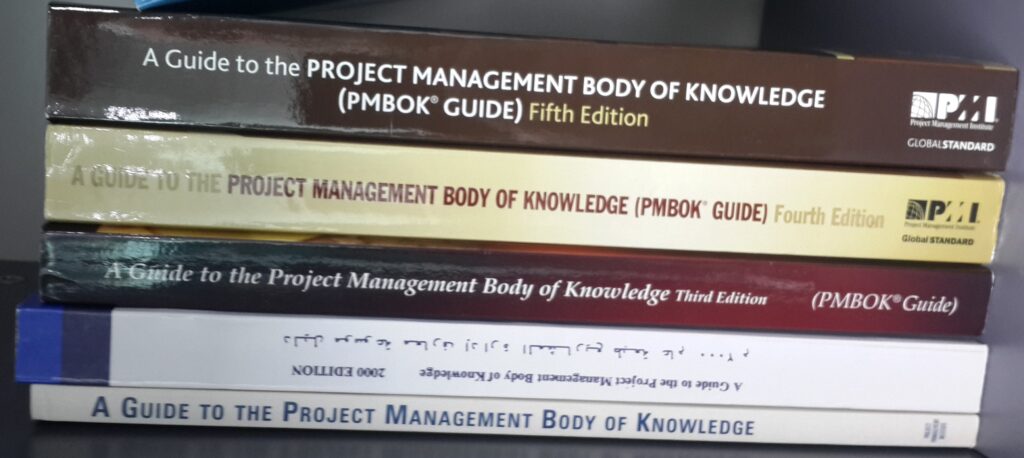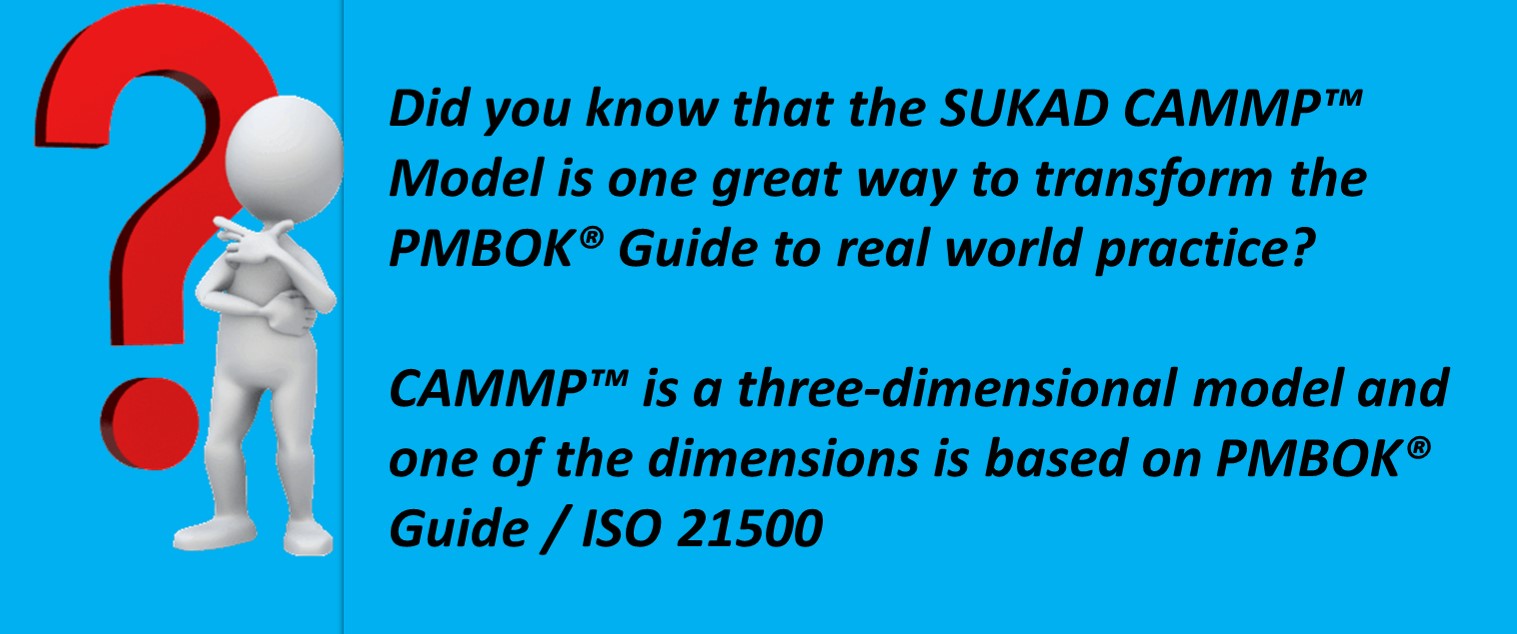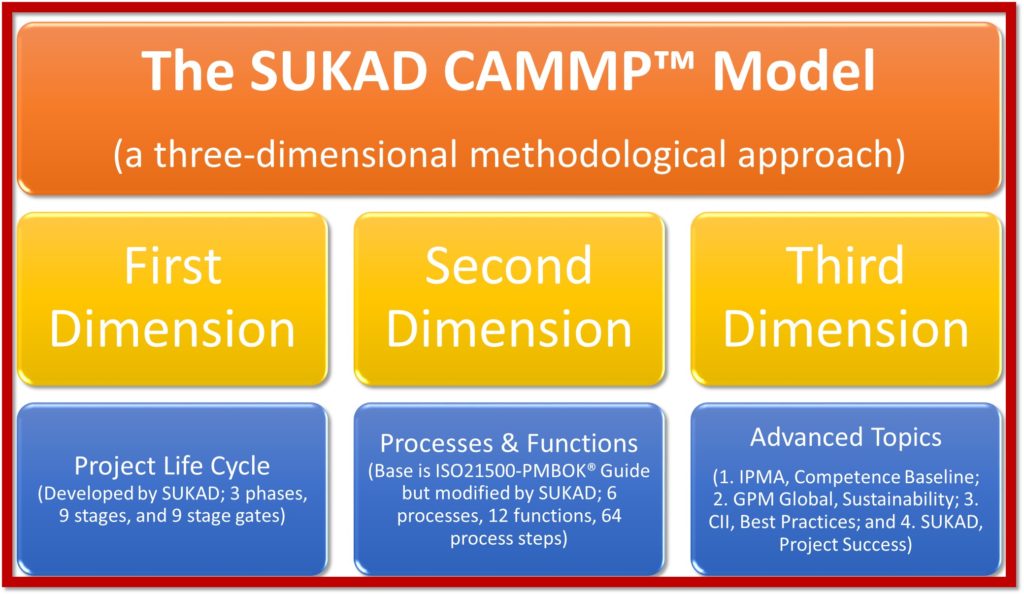Years ago, I started leading project management workshops inside the companies I worked for. I remember my first course, back in the mid-1990’s was on the steps of project control and I delivered to our engineers and construction professionals (our employees and the employees of the general contractor).
Then
The beginning
I delivered courses on managing engineering, construction management, and managing multiple projects. At that time, 2002-2003, many in my company showed interest in PMP certifications. So, with the permission of my manager, I started a PMP program, initially for my department than it was open to all.
The challenge
One of the challenges in delivering the PMP workshops was that the participants (working on capital projects and a few from IT), could not relate the PMBOK Guide processes to the way we manage projects. They could not see the link, even though we did use the guide’s processes and more.
The difference
The main difference is that we followed a project life cycle model in the company, whereas the guide focuses on processes and process groups. Since I knew the company project life cycle and processes, I could translate the guide to our world for them to understand.
Out in the world; three new challenges
In 2004, we started SUKAD to offer project management services, including training and PMP preparation since the PMP started to be recognized in our region. In public and private classes on the PMP, we started to see the same challenges again, participants could not relate. They said they understand the process but how to link them. How to deal with that?

We could not deal with this situation the same way we did when delivering workshops in the company I used to work for. Three challenges here:
- Many of the participants are from different industries (not capital projects) and their project life cycles are likely to be different,
- Even when the participants came from companies handling capital projects, their internal processes would be different,
- Many came from organizations with no documented process for managing projects, and some participants did not even have experience in project management.
To deal with these challenges, we decided to split our PMP classes and offer them at two levels, Level 1 focusing on learning the PMBOK Guide and Project Management and Level 2 shifting the focus to PMP Exam Prep, tips and tricks and for this, we use the Rita Mulcahy model and system.
An opportunity
Analyzing the situation and understanding our clients’ frustrations, we realized what was missing is a methodological approach. The participants could not relate the PMBOK Guide to the real world because they thought the PMBOK Guide offered them a methodology. One of the reasons for the confusion is because many providers marketed the guide as a methodology and best practice; then how come they could not relate?
We saw an opportunity to educate and help people understand, even if that meant going beyond the PMBOK Guide, which was a challenge because many think of the guide as the holy book. The above scenario and other factors led us to develop CAMMP™ (The Customizable and Adaptable Methodology for Managing Projects™).
The first generation of CAMMP™ was intended to be “The PMBOK Guide Methodology”; in other words, a methodological approach to supplement the guide.

Pushing boundaries
So, the first version of CAMMP™ was to supplement the PMBOK Guide and push the boundary to go beyond the guide. This was 2007.
Between 2007 and 2013 we kept improving CAMMP™ until we released Redefining the Basics of Project Management.
Next, we started to review other guides, like ISO 21500, learned more about IPMA and their Individual Competence Baseline, and got involved with GPM Global. At the same time, we kept improving CAMMP™ and enhanced our planning processes, splitting planning into management planning and detailed planning. Refined our project success model, etc.
Now, CAMMP™ is a three-dimensional model and once again pushing the boundaries beyond the PMBOK Guide, ISO 21500, and other references.

Today and closing comments
Today, we hear a lot about Waterfall and Agile. Projects fail, blame the methodology. There are some who believe the high failure rate in technology projects are due to “traditional project management” and “waterfall methods”. Their solution is Agile. The problem is that many of these people do not truly understand agile or agility so they take a few terms and butcher them into what they call “Agile Project Management”. Social Media and online platforms are full of debates on Agile, Scrum, Waterfall, Iterative or Incremental; even the latest PMBOK Guide is adding to the confusion here.
Our answer: CAMMP™ (The Customizable and Adaptable Methodology for Managing Projects™).
Why? Because excellent project management that leads to consistent performance is and has always been ADAPTIVE. One-size-fits-all DOES NOT WORK. Organizations need to build a proper, effective and sustainable organizational project management systems, an OPMS that is dynamic, flexible, and can deal with emergent strategies.
An excellent OPMS must include tailored methods to deal with the diversity of project types and classifications. This is the power of CAMMP!
To learn more, our newest book on the SUKAD Model is only days away from release. Project Management beyond Waterfall and Agile; pushing the boundaries yet again beyond the ongoing debate on waterfall or agile.
You can also get all of our books from Amazon, click here.
